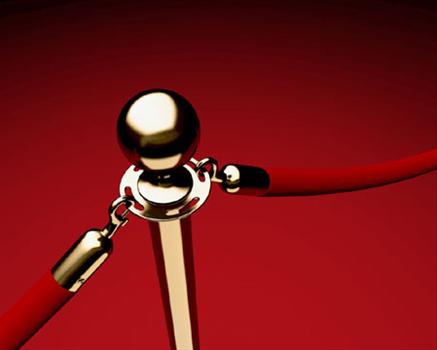Grand Budapest Hotel – miniature sets
Braveheart – the effect of media
2014 marked the 20th anniversary of Gibson starting filming in Scotland, seeing Braveheart get a special relaunch on DVD and Blu Ray.
The “Braveheart effect” earned Scotland £7million to £15million in tourist revenue and encouraged more international film productions to take place in Scotland. Braveheart made over $210,409,000 for the companies involved in the production. It was made to make a profit for the film makers. The “Braveheart effect” was an expected bonus for the tourist industry of Scotland but that was not the objective of the film makers. The Hollywood industry exists to make a profit for Hollywood companies involved in creating the product.
One way the production company saved on production costs was to use the same extras for the wide shots in establishing the battle scenes. These extras played both the English and the Scots in different set ups. Furthermore, most of the battle scenes were shot in Ireland. Production costs were exorbitant however as 900 hours of footage were shot of the Battle of Stirling Bridge alone. Next time you watch the film see how long this battle sequence lasts. 900 hours of footage became…?
The film itself has many inaccuracies such as the fact that Wallace would not have had blue on his face. Woad had not been used for hundreds of years in battle but the imagery is what sticks in people’s heads. Media can manipulate people’s perspectives if they are seeing/experiencing something for the first time through media. An audience might passively accept that Scots used blue on their faces in battle if their only knowledge came from the film. More people have seen the film than have ever opened a history book about the battle. There is a danger in accepting anything you see on screen if you are new to an idea.
A media student questions everything.
Does the media influence you?
Modern Audience perspectives on The Shawshank Redemption
Over time, the preferred reading of a media text may not be blindly accepted by an audience as they are bringing a different perspective to the text than an earlier audience would.
If you use the YouGov “profiles” setting and look up The Shawshank Redemption, the sample of 2803 people shared the following characteristics:
Demographics:
The typical person who said they liked TSR was female, in the 40-59 age group and ABC1. Politically they are slightly left of centre and work in Education, Entertainment or Healthcare or Medicine.
Their hobbies and interests were said to be Movies, UK News and Worldwide News.
They described their own personality positive characteristics as being funny, reliable and open but negative traits were being lazy, selfish and disorganised.
They were most likely to drive a Porche, Mazda, Rover or MG.
Their other favourite movies were Silence of the Lambs, Forrest Gump, The Green Mile, Schindler’s List and Gladiator.
They spend their online time on IMDB and Movie sites or play online games. Their favourite magazine is Total Film and they spend 50 hours a week online and 35 hours watching TV.
Try the link yourself:
https://yougov.co.uk/profiler#/
Try it out for The Untouchables and The Godfather.
Think, how might the fact you live in a different time and country and are of a different age group affect your personal interaction with the film? What differential decoding are you going to have as a result? What are you bringing to the film that makes you read it differently?
Modern audiences – how do they choose which film to go see in the cinema?
Click to access behind-the-box-office_infographics.pdf
Useful statistics about what influences modern audiences, broken down by genre.
Next filming opportunity
Getting there
Okay – well done. Much better footage today and a clearer idea of the end product. Nice juxtaposition of new photos and old with welling original score all coming together to tell a story – montage, you’re mastering montage! 🙂
Montage sequences often combined numerous short shots with special optical effects (fades, dissolves, split screens, double and triple exposures) dance and music. They are usually assembled by someone other than the director or the editor of the movie.
Great opportunity to film for your assignment!
Remember we did a bit of this with the BBC?
The brief:
To produce a film of conducted interviews with everyone who took part in the Battlefields tour. The finished film will play on a constant loop in the local church as part of their Remembrance Day 100 years commemoration.
Let’s talk tomorrow.
Think – plan – research – produce – evaluate.
Scotland deserves its own film school
Wednesday 25 June 2014
”
SCOTLAND should establish a national film school to rival those in England and abroad, the Edinburgh International Film Festival will be told today.
In a key address to the festival (EIFF), Dr David Archibald, of the University of Glasgow, will say that the Scottish film industry also needs to have its own dedicated agency, and that there is a "disconnection between talent and infrastructure" north of the border.
Scottish film has not had its own dedicated agency since Scottish Screen was merged with the Scottish Arts Council to form Creative Scotland in 2010 and Dr Archibald, a lecturer in film and television studies, will say the present funding situation is a "muddle".
He will also say, in the Forsyth Hardy Lecture, that young and emerging talent would benefit from a dedicated film school which would draw from the knowledge and courses currently being taught at institutions such as Screen Academy Scotland at Napier University, courses at Glasgow, St Andrews and the University of the West of Scotland.
Dr Archibald said: "Instead of having the ambition to have a Scottish Film School which could compete not only with London but internationally, there is a political fear of creating another national institution…”
Harry Potter sets
now turned into a theme park. How to extract every last penny of profit.



